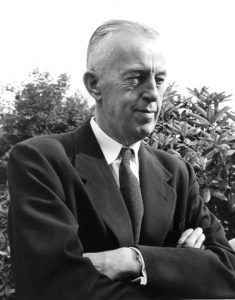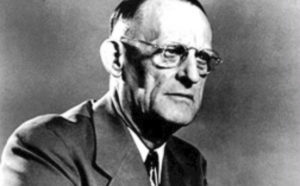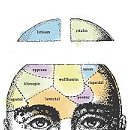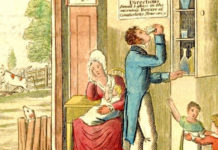“The Noble Experiment”
Quick recap of our story: the theory of the temperance movement was that alcohol (and eventually other drugs) was the cause of, and not a symptom of, social strife. Therefore, if you legally prohibited alcohol (and other drugs) you would remove the main catalyst for crime and “immoral” behavior. Drink and drugs caused addiction to occur through intake of the chemical. The outcome of addiction was poverty, trauma, and suffering, according to this theory. They disavowed the alternative that people drank or used other drugs because of poverty, trauma, and suffering.
After the 18th amendment passed, temperance adherents were excited to finally have the chance to prove their theory. The removal of alcohol would lead to less crime, domestic violence, “lewd” sexual behaviors, deviancy, and immorality. All the evils, especially urban evils found in immigrant communities, would all be replaced with a facsimile of the protestant ethic. Industriousness and (a very specific) morality would reign.
Right away, these ideals started to look fanciful.
First and foremost, even though it was illegal, alcohol never disappeared. Instead, its production, sale, and consumption went underground. Black markets, mainly controlled by organized crime syndicates, filtered booze into speakeasies and late-night clubs across the country. If you wanted booze, you could still find booze. The difference now was who was selling it.
Before the 18th amendment, it was a normal part of regular business. Controls and regulations managed its creation, sale, and distribution, just as they would the sale of any other consumer good. After it went underground, ruthlessness was incentivized, as it is in all black markets. So, while certain crimes, such as assaults and destruction of property, dropped during prohibition, organized crime, such as racketeering, bootlegging, and other violent crimes, burgeoned. They were never able (and have never been able to) to keep the drug out of people’s hands.
Secondly, since alcohol never went away, people still drank—but drinking patterns changed. Many people who were drinking little before prohibition went full teetotaler, mainly because they didn’t have access to alcohol and weren’t bothered enough to go out and find it. However, many still did, including moderate drinkers, heavy drinkers, and those addicted to alcohol. This meant that while there were fewer drinkers, the effects of drink were compounded by the environment. This can been seen in this quote from Courtwright in German Lopez’s Vox Piece, “Prohibition Worked Better Than You Think”:
“’The iron law of prohibition is you will have fewer consumers, but each one will, on average, be worse off and more disruptive than consumers in a legal market.’ People who were drinking were drinking harder liquors. As hard liquor leads to high effects, these higher levels of intoxication lead to more issues (such as health issues or even belligerent behavior).”
Fewer people drank, but people who did drink consumed more “ardent” spirits, and the effects matched the Disruption Hypothesis in Part I of this series. In the end, there is still no consensus on the actual effects of prohibition. While fewer people committed crime, higher amounts of crime came from a concentrated number of drinkers. And, as for those addicted, the people who were really targeted by prohibition were never able to abstain:
“The Prohibition Era was unkind to habitual drunkards, not because their supply was cut off, but because it was not….those who recognized their drinking as destructive were not so lucky in finding help [as help for drinkers was replace by in-carceral punishment]…In 1935, these conditions gave birth to a new self-help group, Alcoholics Anonymous (AA)…AA rejected the prohibitionists’ claim that anyone could become a slave to alcohol… Instead, AA drew a rigid line between normal drinkers, who could keep their consumption within the limits of moderation, and compulsive drinkers, who could not. Thus was born the disease concept of alcoholism.”
Alcoholics Anonymous

Here’s the conventional, high level overview of the creation of Alcoholics Anonymous: Bill W. (Wilson), who was already connected to a Christian Temperance sect named the Oxford Group (more on them in a minute), was suffering yet another round of delirium tremens at Towns Hospital in New York. Pumped full of “medications” such as belladonna (a known hallucinogenic), Bill experienced visions and other spiritual manifestations that allow him to buy into the quasi-religious teachings of the Oxford Group and become abstinent.
In 1935, while on a business trip, a deal turned sour and Bill was almost tempted into drinking at the hotel bar. Instead, he used his new spiritual energy to start making calls around Akron to try and find an available member of the Oxford Group. Eventually, he stumbled onto one Dr. Bob Smith. Dr. Bob was originally hesitant to meet with Bill, but eventually gave him “15 minutes,” which as legend goes, turned into hours. During that conversation, the idea of AA was created.

The next steps (pun intended), connections to, and religious leanings of, the Oxford group are never really specified in that usual story. After their Akron meeting, Bill W. and Dr. Bob started adapting the Oxford Group teachings to a more secular, agnostic form. The Oxford Group’s message at the time was that the roots of evil were based in fear and selfishness, and the cure was to “surrender one’s self over to God’s plan.” To do so, one must follow certain practices, such as:
- “The sharing of our sins and temptations with another Christian.”
- “Surrender our life past, present and future, into God’s keeping and direction.”
- “Restitution to all whom we have wronged directly or indirectly.”
- “Listening for God’s guidance, and carrying it out.”
Those principles were designed to help the adherent convert new members by using the “5 C’s”:
- “Confidence”: the new person had to have confidence and know his secrets would be kept.
- “Confession”: the new person had to be honest about the real state of their life.
- “Conviction”: the acknowledgement of the seriousness of their sins by the new person and the need to be freed of them.
- “Conversion”: the process of the person’s decision to surrender to God had to be the person’s own free will.
- “Continuance”: the person was responsible as a life changer to help new persons become all that God wanted them to be.
Bill W. and Dr. Bob started replacing references to God with “Higher Power” allowing for a “God of your choice” instead of the Oxford Group’s very Protestant, Christian version of God. In the process, they re-wrote the principles and 5 C’s into what is now known as the 12 steps:
- We admitted we were powerless over alcohol—that our lives had become unmanageable.
- Came to believe that a Power greater than ourselves could restore us to sanity.
- Made a decision to turn our will and our lives over to the care of God as we understood Him.
- Made a searching and fearless moral inventory of ourselves.
- Admitted to God, to ourselves, and to another human being the exact nature of our wrongs.
- Were entirely ready to have God remove all these defects of character.
- Humbly asked Him to remove our shortcomings.
- Made a list of all persons we had harmed, and became willing to make amends to them all.
- Made direct amends to such people wherever possible, except when to do so would injure them or others.
- Continued to take personal inventory and when we were wrong promptly admitted it.
- Sought through prayer and meditation to improve our conscious contact with God, as we understood Him, praying only for knowledge of His will for us and the power to carry that out.
- Having had a spiritual awakening as the result of these Steps, we tried to carry this message to alcoholics, and to practice these principles in all our affairs.
Through cross reference, you can match the 12 steps to their Oxford Group principles. By focusing on the “suffering alcoholic” instead of the Christian, they opened the teachings to a new cohort. In “Speaker Meetings,” members with longer lengths of “sober time” give what are called “Leads,” which are stories about what “What was, what happened, and what is now.” In other words, instead of sharing with another Christian, they were attempting to share with another alcoholic.
Once the you have gained their “Confidence” through your “Lead”, you can help the new adherent “Surrender [their] life past, present and future, into God’s keeping and direction” through the “Conversion” in steps 1-3. You can find the act of “Confession” and “Conviction” in steps 4-7, the spiritual principle of restitution in Steps 8 and 9, and the act of “Continuance” in steps 10-12.
Opening the group up beyond self-identified Christians did help AA grow, absolutely. But their true innovation was the idea of the “chosen few drunkards.” During his stays at Town’s Hospital, Bill W. came to know one Dr. William Silkworth, who was starting to understand alcoholism (a word that was becoming fashionable at the time) as akin to an allergy. He believed that some preexisting condition interacted with alcohol in a way that caused the alcoholic to become incapable of resisting alcohol through self-will alone, even in the face of suffering and ill health. This allergically diseased brain (usually believed to be caused by genetics) started to be seen as the culprit behind alcoholism (and eventually all addictions).
This innovation was very helpful to the temperance movement. By the beginning of the 1930s, they needed to adapt. As we spoke of earlier, the prohibition of alcohol did not remove all social ills. In fact, the world tumbled into the “Great Depression” even while alcohol was banned. This is not an economics discussion so we will simply say there were many reasons for the depression, but there was never just one cure. One idea to help the economic condition was to repeal prohibition in order to assimilate the alcohol industry into the mainstream economy. This would allow for more jobs, more economic activity, and, importantly, a new tax base. In 1933, prohibition was repealed through the 21st amendment. Two years later, Bill and Dr. Bob had their fabled meeting.
This new “Alcoholism” movement was an easy turn for many temperance adherents. While they had lost the battle of prohibition, they could rally around Dr. Silkworth’s idea. With the new disease theory, temperance folk could now allow for moderate drinkers without eliminating their idea that alcohol is an evil at some level and focus their attention on the chosen few “alcoholics.” Coupled with a burgeoning new movement (AA) for temperance members to refer to, the movement changed from a public policy interest group to what we would now call a treatment-based outreach organization.
While this made Bill W. and Dr. Bob seminal figures in the temperance community, AA eventually grew beyond those restraints. AA’s pseudo-temperance culture has been injected into such films as “Robin and the 7 Hoods” (and its famous “Mr. Booze” scene), “Clean and Sober” and “28 Days”, and in television shows like “Mom” and “Breaking Bad” (the latter of which made the often-exhibited mistake of portraying the groups as being run by a professional, and not the lay members themselves).
The common belief behind why AA became ubiquitous in America is that it was, and is, so successful. If we believe that before AA it was impossible to help alcoholics, then it would indeed be a miracle. However, its success rate has never been thoroughly proven, and there have been philosophical and legal battles around its religiosity since its inception. Instead, much of its growth can be understood as a VERY successful public relations campaign.
Public Relations and the Growth of AA
An often unseen and unsung hero of the 12-step movement is the first woman to join the predominantly male group. Margaret “Marty” Mann was born into a privileged family, which allowed her access to education, wealth, and, let’s say, “merriment.” Eventually marrying into an even wealthier family, a turn in fortune pushed Marty into the work force—specifically, the burgeoning world of “public relations.”
From the Public Relations Society of America (PSRA):
The earliest definitions emphasized press agentry and publicity, while more modern definitions incorporate the concepts of “engagement” and “relationship building.” In 1982, PRSA adopted the following definition: “Public relations helps an organization and its publics adapt mutually to each other.”
Eventually, the drinking that was embedded in her upper-middle class life started to threaten her wellbeing. She was pointed in the direction of AA in 1939, while there were only 2 groups in the county (by comparison, there are 118,000 groups around the world today). While in the group, despite the hardship of gender inequality within AA (some of which morphed into sexual abuse in the form of “13th Stepping”), she was able to gain sobriety. With this sobriety, and as part of her 12th step work, Marty decided to use her public relations skills to help eliminate the stigma she felt existed for alcoholics. She did this by proliferating the “disease theory” of alcoholism.
Her practiced craft, which aimed to help organizations (especially special interest groups and corporations) gain traction with the public at large, was widely credited as the “creation” of Edward Bernays. Bernays just happened to be the nephew of Sigmund Freud, and took up part of Freud’s mantle of trying to understand the human psyche and its accompanying behaviors. While Freud was attempting to “cure” pathologies and neuroses, Bernays was using this knowledge for a different effect:
The conscious and intelligent manipulation of the organized habits and opinions of the masses is an important element in democratic society. Those who manipulate this unseen mechanism of society constitute an invisible government which is the true ruling power of our country. We are governed, our minds are molded, our tastes formed, and our ideas suggested, largely by men we have never heard of…. It is they who pull the wires that control the public mind. (From Bernays’ Propaganda)
This second definition does not sound as mutual as the first, and in no way is this writer saying that AA (and the temperance movement) is a quasi-fascistic regime. However, the ideologies that Bernays describes in Propaganda were inherent in Marty Mann before and after she gained sobriety within AA.
Using her connections in the upper classes in America, she helped to get funding from John D. Rockefeller. This helped to fund more meetings, but it also helped to found the Yale School of Alcohol Studies (which is now the Rutgers Center of Alcohol & Substance Use Studies) and the National Committee for Education on Alcoholism (now the Council on Substance Abuse [COSA]). These groups, and other connections, also helped her get access to the mass media, including the Saturday Evening Post.
It was this connection that really allowed AA to enter the zeitgeist. Jack Alexander’s now-famous piece sold the story of AA to an unfamiliar public. The story described:
- How the meetings and steps worked keep people sober at higher rates than ever before
- How the science behind alcoholism was falling in line with the disease theory
- How only people who “want to want to quit” fail at the program, and one drink leads to a full-blown relapse
- And many other tropes, including the slogans and other artifacts of AA lore
Yet, if you search the document, you can find no mentions of the word God. No “God as you understand Him,” and only 1 “Higher Power” in a single paragraph. This was deliberate, as they did not want to “beat people over the head” with God. Yet, to this day, the meetings open with the Serenity Prayer and close with the Lord’s Prayer.
This is a highly pseudo-religious group, with a direct tie back to the temperance movement and teetotalers, yet this history is rarely, if ever, expounded upon. While AA is often described as a descendent of other groups in its literature, the details of that descendance are rarely discussed.
Additionally, the group has taken an adapted version of Benjamin Rush’s original disease theory and helped to make it an assumed truth. The academic and research institutions that Mann helped to found were intentionally funding research that was designed to prove the disease theory, and not to test its efficacy. It was presenting a theory of addiction that had existed since the nation’s inception, but with a twist, and presenting it as newly established scientific idea.
This work was established as mainstream by attaching the AA/disease theory movement to institutions like Yale and the Rockefellers and allowing its story to be told in innocuous media like the Saturday Evening Post. This gave the group legitimacy while it was breaking from its more radical and divisive temperance past. These actions created the path for AA to eventually institutionalize itself in treatment centers across the country through what is known as “Twelve Step Foundational Therapy” (TSF), or the “Minnesota Model” of treatment, after the home state of the very first TSF inpatient center, Hazelden.
Conclusion
To this day, the disease theory and AA/TSF dominate both theory and praxis in addiction and substance use treatment and research institutions. While there are alternatives today, and we will discuss those in a later piece, this duo maintains its dominance. Yet, as we will see, there were problems with the model from the get-go.
First, if the research of your theory is being conducted by people who already believe your theory, you will get skewed results. Second, Bill W. himself said the group was supposed to be “but one way” of recovering, yet its dominance has nearly eliminated the market for alternatives. And third, right away a whole swath of people were ignored—mainly those suffering from chemical dependency that was not directly tied to ethanol. As can be found in the Bill W.’s writings, drug addiction and alcoholism have always been seen as separate entities:
“Therefore, I see no way of making nonalcoholic addicts into A.A. members. Experience says loudly that we can admit no exceptions, even though drug users and alcoholics happen to be first cousins of a sort. If we persist in trying this, I’m afraid it will be hard on the drug user himself, as well as on A.A. We must accept the fact that no nonalcoholic, whatever his affliction, can be converted into an alcoholic A.A. member.”
In the next piece, we are going to see what was happening to those who used drugs other than alcohol.
Editor’s Note: All blogs in this series are available to read here.















Interestingly enough, Bill Wilson, himself, wanted go beyond AA meetings as tools for sobriety, and began to correspond with the Saskatchewan group headed by Abram Hoffer and Humphry Osmond, who were studying psychedelic therapy in the treatment of alcoholism and the use of megadose niacin in the suppression of the DT’s. Bill had already taken it once in hospital surroundings, and, I believe, had Osmond turn him on at his home. After he found out that niacin stabilized his moods, he became a great advocate for it (he’d persuaded 30 of his AA buddies to try it to get their opinion), and for several years just before his death, had a foldout on it inserted into copies of the Big Book being sent out.
Report comment
Removed for moderation.
Report comment
As much as you SEEM TO have studied A.A., you should be able to tell us what Dr. Bob’s literally dying words to Bill Wilson were, & what he meant by them….?….Y?, N?…..
Report comment